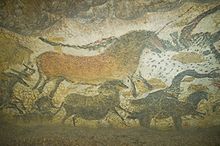Do you want to know what comes after Thaumatrope? Well, of course it is Phenakistoscope!
What is Phenakistoscope? Phenakistoscope was a great improvement on the thaumatrope, creating one moving image from several stills, and became the first optical toy to create a true illusion of motion. It is actually a very simple design. It uses an open top drum with a sequence of images drawn inner side of the drum. Each image is all in the same distance from the centre of the circle. There are slits on the drum, so that people can look at the images inside while the drum spinning. The slits help the viewer look at one direction, instead of focusing one image on the drum. Then the viewer would be able to see a sequence of according images, a motion picuture.
Belgian physicist Joseph Plateau and his sons introduced the phenakistoscope also known as the 'spindle viewer' in 1832. It was also invented independently in the same year by Simon von Stampfer of Vienna, Austria, who called his invention a stroboscope. Plateau's inspiration had come primarily from the work of Michael Faraday and Peter Mark Roget which Faraday had invented a device he called "Michael Faraday's Wheel," that consisted of two discs that spun in opposite directions from each other. From this, Plateau took another step, adapting Faraday's wheel into a toy he later named the phenakistoscope.
Moreover, unlike Faraday's Wheel, whose pair of discs spun in opposite directions, a phenakistoscope's discs spin together in the same direction. When viewed in a mirror through the first disc's slots, the pictures on the second disc will appear to move. The phenakistoscope consisted of two discs mounted on the same axis. The first disc had slots around the edge, and the second contained drawings of successive action, drawn around the disc in concentric circles.
After going to market, the phenakistoscope received other names, including Phantasmascope and Fantoscope. It was quite successful for two years until William George Horner invented the zoetrope, which offered two improvements on the phenakistoscope.
 |
| Phenakistoscope |






